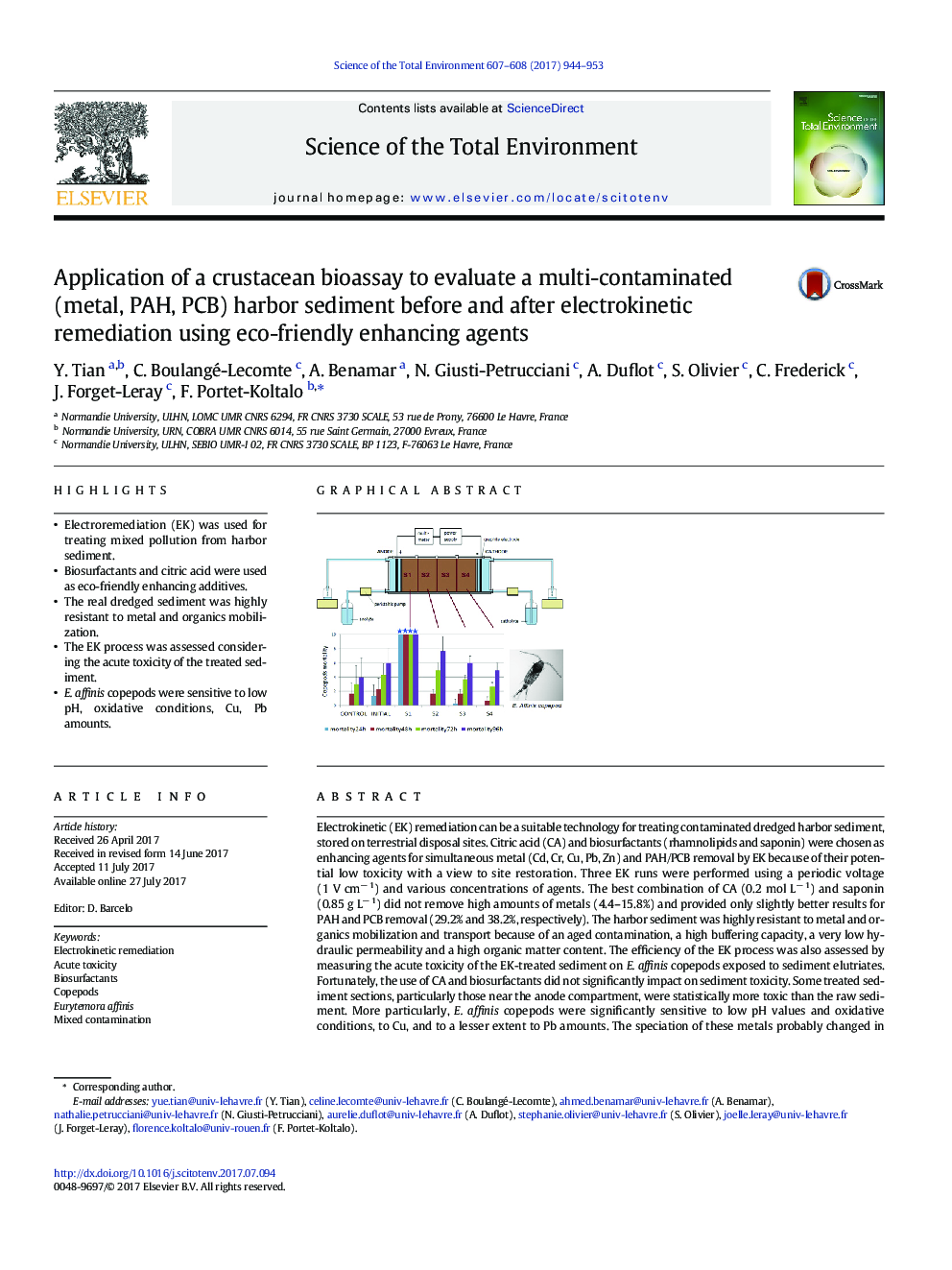| کد مقاله | کد نشریه | سال انتشار | مقاله انگلیسی | نسخه تمام متن |
|---|---|---|---|---|
| 5750052 | 1619694 | 2017 | 10 صفحه PDF | دانلود رایگان |

- Electroremediation (EK) was used for treating mixed pollution from harbor sediment.
- Biosurfactants and citric acid were used as eco-friendly enhancing additives.
- The real dredged sediment was highly resistant to metal and organics mobilization.
- The EK process was assessed considering the acute toxicity of the treated sediment.
- E. affinis copepods were sensitive to low pH, oxidative conditions, Cu, Pb amounts.
Electrokinetic (EK) remediation can be a suitable technology for treating contaminated dredged harbor sediment, stored on terrestrial disposal sites. Citric acid (CA) and biosurfactants (rhamnolipids and saponin) were chosen as enhancing agents for simultaneous metal (Cd, Cr, Cu, Pb, Zn) and PAH/PCB removal by EK because of their potential low toxicity with a view to site restoration. Three EK runs were performed using a periodic voltage (1 V cmâ 1) and various concentrations of agents. The best combination of CA (0.2 mol Lâ 1) and saponin (0.85 g Lâ 1) did not remove high amounts of metals (4.4-15.8%) and provided only slightly better results for PAH and PCB removal (29.2% and 38.2%, respectively). The harbor sediment was highly resistant to metal and organics mobilization and transport because of an aged contamination, a high buffering capacity, a very low hydraulic permeability and a high organic matter content. The efficiency of the EK process was also assessed by measuring the acute toxicity of the EK-treated sediment on E. affinis copepods exposed to sediment elutriates. Fortunately, the use of CA and biosurfactants did not significantly impact on sediment toxicity. Some treated sediment sections, particularly those near the anode compartment, were statistically more toxic than the raw sediment. More particularly, E. affinis copepods were significantly sensitive to low pH values and oxidative conditions, to Cu, and to a lesser extent to Pb amounts. The speciation of these metals probably changed in these pH and redox conditions so that they became more easily leachable and bioavailable. In contrast, toxicity was negatively correlated to PAH and PCB amounts after EK treatment, probably due to the production of oxidized metabolites of PAHs and PCBs.
154
Journal: Science of The Total Environment - Volumes 607â608, 31 December 2017, Pages 944-953